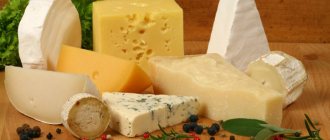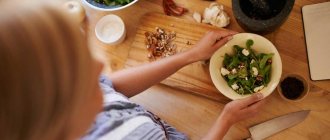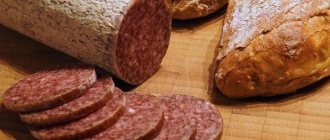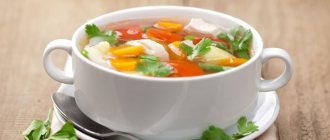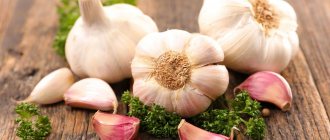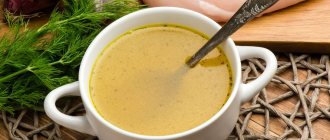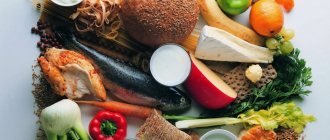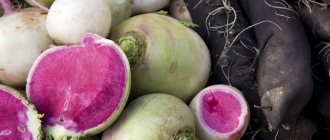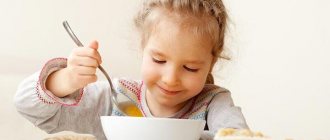Table No. 5 according to Pevzner is considered one of the best special diets prescribed for problems with the bile ducts and bladder, liver, and pancreas. Diet 5 for children is characterized by a cleansing and health-improving effect, based on the complete rejection of foods that provoke complications. The daily menu for such a diet contains dishes that normalize the functioning of the digestive organs and do not irritate them. The 5th table diet is the background on the basis of which effective therapy for the disease is carried out.
General Diet Recommendations
The main requirement that needs to be met when dieting table No. 5 for children is to eat in small portions. You need to feed your baby at least 5-6 times a day. This will promote regular flow of bile. Food should be adjusted for the presence of proteins and carbohydrates. This diet excludes the use of products containing cholesterol, oxalic acid and essential oils. Fried foods are prohibited.
With this diet, all the nutrients necessary for the growth and development of the child’s body are supplied in sufficient quantities. If you follow this regimen, your child’s digestive problems will fade into the background.
It is recommended to steam or boil food. It is impossible to give a child a dish hot or, on the contrary, cold: it should only be warm.
Rules for preparing food for diet table No. 5
Your child's food should be warm, but not hot. Cold dishes are excluded. The method of preparing food is extremely important. It is forbidden to eat fried, canned or smoked foods.
Acceptable dishes are prepared in the following ways:
- Boiled;
- Steamed;
- Baked (rare);
- Stewed (rarely).
When preparing food, the use of salt is reduced. This will facilitate the removal of excess water from the child’s body.
Meals throughout the day should be frequent and in small portions.
Allowed products: table
Diet table number 5 for children includes a list of foods necessary for the body. The emphasis is on protein products. Fats should be excluded. This is clearly demonstrated in the table.
| Product category | Allowed |
| Meat and fish | Low-fat types (beef, veal, rabbit, perch, crucian carp, cod, pike perch). Use boiled and baked |
| Bird | Boiled chicken, turkey fillet |
| Flour | Stale bread. Galette cookies |
| Cereals | Buckwheat, oatmeal, semolina, rice - in the form of boiled, viscous porridge. Pasta made from durum wheat is allowed |
| Soups | Vegetarian soups made with vegetable broth from recommended cereals |
| Milk | Low-fat cheese, yogurt, cottage cheese, milk |
| Vegetables | Cabbage, fresh tomatoes, cucumbers, young greens. Eat boiled zucchini, onions, beets and carrots |
| Fruits | Watermelon, peaches, bananas, apricots, pears, melons, apples. Non-acidic berries: blueberries, strawberries. Dried fruits. |
| Beverages | Tea without steeping, fruit juices, compotes made from dried fruits |
Products that CAN be consumed while on a diet.
Beverages:
Weak tea with lemon, semi-sweet or with a sugar substitute (xylitol), milk; rosehip decoction; fruit and berry juices without sugar, pureed compotes from fresh and dry fruits; jelly; mousses with a sugar substitute (xylitol) or semi-sweet with sugar.
Soups:
Vegetarian - with water or vegetable broth, mashed with potatoes, zucchini, pumpkin, carrots, semolina, oatmeal or buckwheat, rice, noodles. It is allowed to add 5 g of butter or 10 g of sour cream. Fruit soups; milk soups with pasta; borscht (without broth); vegetarian cabbage soup; beetroot; pea soup. Attention! No sauteing! Flour and vegetables for dressing are not fried, but dried.
Meat/fish/seafood:
Lean beef, veal, rabbit, chicken, turkey (all poultry without skin). Only boiled or steamed, pureed or chopped (cutlets, soufflé, puree, dumplings, beef stroganoff, soft meat in pieces); cabbage rolls, milk sausages (very limited); low-fat fish (pike perch, cod, hake, pollock, tuna), fresh oysters; shrimp, squid, mussels - limited; lightly salted salmon, salmon - limited in fat content and as a snack, not a main course; dumplings with veal or chicken (dough, lean meat, water, salt) - very limited in fat content and definitely (!) - not fried.
Ideal lunch - steamed cabbage rolls with lean minced meat
Porridge:
Pureed and semi-viscous from buckwheat, oatmeal, semolina, as well as rice, boiled in water or half and half with milk; various products from cereals - soufflés, casseroles, puddings half and half with cottage cheese, casseroles from noodles, cottage cheese; pilaf with dried fruits; muesli (without additives prohibited in the diet), oatmeal (without additives).
Bread:
Bran; rye; wheat from flour of the 1st and 2nd grades, dried or yesterday's baking, crackers; unsweetened dry biscuits, biscuits; baked goods with boiled meat and fish, cottage cheese, apples; dry biscuit.
Fermented milk/milk products:
Sour cream and cheese (not too spicy and in very limited quantities); no more than 2% fat content kefir, yogurt and half-fat or low-fat cottage cheese, milk - 200 g. You can also have cottage cheese dishes, soufflés and casseroles, lazy dumplings and cheesecakes, curdled milk, puddings.
Vegetables:
Starchy vegetables, boiled and baked in pureed form: potatoes, cauliflower, carrots, zucchini, pumpkin, beets, green peas, Chinese cabbage; salads (romaine, corn, iceberg and other salads neutral in taste) in limited quantities; bell peppers, seaweed, cucumbers, tomatoes (in very limited quantities; in case of exacerbation, it is advisable to exclude them).
Steamed chicken cutlets with mashed potatoes fit perfectly into the diet menu “Table No. 5”
Fruits:
Ripe, soft and non-acidic apples (mashed raw or baked); 1 banana per day, pureed compotes from fresh and dry fruits, jellies and mousses with sweeteners; prunes, 2 small pieces of watermelon.
Eggs:
In the form of protein omelettes - up to two whites per day, no more than ½ yolks in dishes;
Fats:
Butter (up to 30 g); refined vegetable oils (up to 10–15 g) added to dishes.
Sauces and seasonings:
Vegetable non-spicy sauces, milk sauces and sour cream; fruit dips. Salt on diet number 5 is limited - no more than 10 grams per day (!); soy sauce.
Sweet:
Marshmallows in very limited quantities; marmalade and sweets without cocoa and chocolate; jam (not sour and not very sweet and is best dissolved in light tea or hot water), marshmallow, honey; sugar in small quantities.
On diet number 5 you can sometimes eat marshmallows
Prohibited and restricted foods in the diet
For a child, diet table No. 5 involves avoiding foods that can have a negative effect on internal organs. The diet of a sick child excludes or limits the use of a certain type of food. If you have digestive problems, you should not eat some previously favorite foods.
| Product category | What is prohibited |
| Bakery products | Pancakes, baked goods, fried and puff pastries, wheat bread today |
| Fish | Dried and smoked products, canned food |
| Meat and poultry | Smoked, canned. Sausage. Fat duck or goose, heart, kidneys, liver, cooking fats, pate |
| Milk | Fat cheese, sour cream, cottage cheese, fermented baked milk, butter (in large quantities) and margarine |
| Products that enhance fermentation and rotting | Peas, beans, beans, soybeans, millet |
| Vegetables | Spicy and bitter - sorrel, radishes, green onions, garlic, as well as mushrooms, pickles and pickled vegetables |
| Fruits and sweets | Chocolate, ice cream, sour berries and fruits (citrus fruits, cranberries, plums) |
| Beverages | Cocoa, black coffee, spirits even with low alcohol |
| Spices | Pepper, mustard, and horseradish should not be present in the diet menu. Salt should be limited as much as possible - up to 10 g per day |
Breakfasts and desserts
Lazy dumplings
A very easy to prepare dietary dish that can be offered not only to adults, but also to children.
Products needed for making dumplings: fresh cottage cheese (half a kilo), sugar (2 tablespoons), one raw egg, flour (3/4 cup), salt.
Cottage cheese is mixed with egg, sugar and a pinch of salt. Then add a little flour to the resulting mass. When the dough acquires a soft but elastic consistency, it can be considered ready. It should be a little sticky and wet. Before you start making dumplings, you need to wet your hands with water, this will make it easier to work with the dough. A long sausage is formed from the resulting mass, which is cut into fragments of the same size. The dumplings can be given any shape. Place the finished dumplings in boiling water and cook for no longer than 3 minutes. When all the dumplings are on the surface, you can turn off the heat.
Dumplings are served well with sour cream. This delicious breakfast can be prepared for future use by placing some of the dumplings in the freezer.
Rice-curd casserole
To prepare a casserole, which can be used as a breakfast and for dessert, you will need the following products: rice (250 g), cottage cheese (200 g), 3 apples and 3 chicken eggs, some raisins, 2 glasses of milk, a tablespoon of sour cream, 2 tablespoons spoons of sugar.
A glass of milk is mixed with a glass of water and rice is boiled in this mixture. The cottage cheese is carefully ground through a sieve, and the eggs are beaten with sugar. Apples without peel and seeds are cut into cubes. Cool the rice, add cottage cheese, raisins, apples and an egg-sugar mixture. All products are placed in a heat-resistant dish and placed in the oven. Top the casserole with a mixture of egg and sour cream. The dessert should be kept in the oven for a quarter of an hour at a temperature of 200 °C.
Steamed omelette
Steam omelet is an excellent option for breakfast, which fits into the menu of table No. 5. In this case, the yolk may not participate in the preparation of the dish (provided that the patient has recently undergone surgery and is in the recovery stage). In this case, the yolk is separated from the white. Beat the egg white, mix it with low-fat milk, salt it and pour it into the bowl of a double boiler. After 20 minutes the omelette will be ready.
To make the omelette taste brighter, you can add a pinch of nutmeg to it. As for the yolk, when the process of exacerbation of the disease has passed, it can be added to the dish.
Milk soup with potato dumplings
To prepare the dish you will need 800 ml of milk, 4 potatoes, 2 tablespoons of starch, salt and fresh carrot juice.
The potatoes must first be peeled and grated on a fine grater. After the juice has separated, the potatoes are gently squeezed out and the starch is combined with the potato mass. Then small meatballs are prepared from it, which are boiled in boiling milk until they are completely cooked. At the end of cooking, add carrot juice to the soup, add salt, boil for another minute and turn off.
Oat cookies
To prepare cookies you will need oatmeal, two eggs, sour cream (300 g), sugar (1 cup), butter (100 g).
The flakes will need to be thoroughly dried in the oven, and then ground to a powder. Then sour cream, eggs, butter and sugar are added to the cereal. Having kneaded the dough from these ingredients, it is rolled out, given the desired shape and baked in the oven at 180 degrees for a quarter of an hour.
Healthy recipes for kids
Table 5 imposes a ban on a number of products. However, this does not prevent children from being fed tasty and varied dishes. Diseases of the digestive system do not exclude the consumption of vegetable and meat stews, lean meats, fish, various cereals, as well as fruits and desserts.
White omelette
One of the light and healthy dishes. The easiest way to prepare it is in a double boiler. You should take a couple of fresh eggs, break them and separate the whites from the yolks. Egg whites have almost no cholesterol. Add salt and milk, a spoonful of vegetable oil, and beat well with a blender. Place the container with the resulting mixture in a double boiler. The dish takes about 10 minutes to prepare and can be served.
Vegetable casserole
The casserole is especially popular in the summer-autumn season, when the assortment of fresh vegetables is richest. The set of vegetables includes zucchini, peppers, and eggplants. They fully comply with the requirements of the diet of table 5. They are cut into cubes, add a little grated cheese and the white of one egg. Everything is thoroughly mixed. The container with the contents is covered with foil and placed in a double boiler. The finished casserole is salted to taste and sprinkled with finely chopped herbs.
Beetroot cutlets
There is no meat in beet cutlets; this is an exclusively dietary dish. Its main ingredients are beets and other vegetables, as well as binding ingredients: flour, semolina, chicken egg.
When considering your diet, be guided by your child’s taste preferences.
To obtain such a dish, you need to boil the beets, grate them, add a raw egg and salt. Then add semolina and distribute it over the beet mass. After this, you need to make cutlets from the beetroot “minced meat”. Now you can fry them in oil. During the frying process, it is advisable to cover the pan with a lid so that the cutlets are additionally steamed.
Fish casserole with vegetables
To obtain this dietary dish, preheat the oven to 160 degrees. Arrange the casserole in layers in a roasting pan. Place potatoes on the bottom, which need to be salted and peppered, then carrots. Grease with mayonnaise or sour cream.
Next, fish fillets cut into thin slices are placed. Everything is poured with lemon juice, seasoned with spices, sprinkled with salt and covered with onions. Slices of zucchini are placed on top of the onions, and tomatoes are placed on top. Salt is added again, as well as pepper and grated hard cheese. The container is placed in a preheated oven for 35-40 minutes. Once the casserole has cooled, it can be served.
Lazy dumplings with berry sauce
You need to stock up on cottage cheese, sour cream, eggs, sugar, semolina. All ingredients are mixed and set aside for half an hour until the semolina swells. At the same time, the sauce is cooked. Sugar is added to the berries, and the container with the mixture is placed on the fire. Then starch dissolved in water is poured into the contents, the liquid is brought to a boil, and the fire is turned off.
Heat water in a wide saucepan. Flour is added to the curd mixture, pieces of dough are plucked from this mass, from which small balls or rolls are made. The resulting dumplings are thrown into boiling water and cooked until they float to the surface. The finished dumplings are taken out, poured with butter and berry sauce, and served.
Oat cookies
This type of baking does not require flour. Diet cookies for table 5 are made from oatmeal and eggs. No oil needed either. Oatmeal is ground in a coffee grinder and a handful of raisins is added to it. Beat 2 chicken eggs, adding 3 tsp. sugar, a pinch of vanillin and cinnamon. Place a baking sheet with cookies laid out in it in an oven heated to 180 degrees. Bake for 15-20 minutes.
Pumpkin Noodle Casserole
You need about a glass of grated fresh pumpkin, 200 g of noodles, half a glass of milk, 1 egg, 2 tbsp. l. sugar and 1 tbsp. l. butter. Add salt and sugar to the pureed pumpkin and simmer until soft. The noodles need to be cooked separately. Then butter and milk are added to it. The mixture is set aside for 30 minutes. Then an egg is broken into the contents, everything is laid out on a baking sheet and placed in the oven for 20 minutes. Cool the finished casserole, apply a layer of sour cream and serve.
Protein omelet with cheese
Required ingredients:
- 2 chicken eggs;
- 2 tbsp. l. milk;
- 10 g cheese;
- a pinch of salt.
For the omelet you will need butter. It should be melted in a frying pan. Place egg whites in a common container with milk, but do not shake. Pour the mixture into a hot frying pan. After 3-4 minutes, sprinkle the omelette with grated cheese and cover with a lid for 2 minutes. Then remove the omelette. Serve with sour cream.
Vegetable caviar
Prepared as an addition to main dishes. For caviar you should take 2 potatoes, 1 carrot, 1 fresh cucumber, 1 onion. You will also need vegetable oil and salt.
Potatoes and carrots need to be boiled whole, then cooled, peeled and cut into large portions. Also cut the onion into large pieces and fry it in a frying pan. Finely chop the cucumber. All components are processed in a meat grinder. The mixture prepared in this way is seasoned with vegetable oil, salt is added to it and mixed well. The caviar is ready.
The best dishes from the menu for a diet table for 5 children
Parents of a sick child need to learn how to cook delicious, healthy meals. Only approved products can be used for this. Even a small amount of prohibited ones can lead to aggravation. Dishes can only be boiled, steamed, stewed or baked. Products must be chosen fresh and of high quality.
The advantage of this diet is that there are many allowed foods, you can prepare different dishes that your child will like. Eating them will be beneficial for all family members.
- A protein omelette with cheese is easy to prepare. Over medium heat, melt a piece of ghee in a frying pan. Beat 2 egg whites and 2 tablespoons of milk. Pour into the pan. After 3-5 minutes, sprinkle with cheese, cover with a lid, simmer for another 2-3 minutes.
- Chicken fillet quenelles are made in the oven. To do this, add a spoonful of flour, protein and a little milk to 100 g of minced meat. Spoon the resulting mixture onto a greased baking sheet.
- Cheesecakes with carrots are also made in the oven. Make a dough from a pack of cottage cheese, 4 tablespoons of flour, eggs and a spoon of sugar. Add grated carrots, grate another apple if desired. The dough turns out liquid, it needs to be spooned onto a baking sheet. It’s even easier to bake cheesecakes in molds.
- Vinaigrette can be made, but without peas, onions and pickles. You need to boil potatoes, beets and carrots. Cut them into cubes, season with vegetable oil. If desired, add fresh cucumber and herbs.
- It's easy to make delicious creamy broccoli soup. To do this, boil potatoes and carrots, cut into cubes, for 10 minutes over medium heat. Add broccoli, disassembled into florets, to the pan. Add a little salt to taste and cook until done. Grind in a blender or rub through a sieve.
- Vegetable stew should be stewed without oil. It is made from potatoes, zucchini, and carrots. If desired, you can add broccoli and tomato.
- The child can enjoy homemade oatmeal cookies. Make a batter from eggs, milk, sugar, flour. Add some melted butter and baking soda. After this, stir oatmeal into the dough. Place the dough on a greased baking sheet. Bake in a preheated oven for 15 minutes.
- Vegetable casserole with fish is good for dinner. Place in layers on a greased baking sheet: potatoes, cut into slices, then carrots. Add a little salt to the vegetables and brush with low-fat sour cream. Place slices of fish fillet on top. Top it with slices of zucchini and tomatoes. Add salt again and put in the oven. 10 minutes before ready, sprinkle with grated cheese.
Despite the large number of prohibitions, the diet of a child on diet No. 5 is varied. Showing your imagination, you can prepare delicious dishes for him. You just need to consult your doctor about the choice of permitted products, as it depends on your individual characteristics and health status.
IMPORTANT! Informational article! Before use, you should consult a specialist.
Sample menu for the week
If there is a child at home with liver and gall problems, it is important to have a long-term menu. It includes products that will benefit the body. The menu for every day of the week, corresponding to diet table No. 5, includes dishes prepared according to the best recipes for children.
As an example, here is a sample menu.
Monday
- Breakfast – cottage cheese casserole. Raisin compote.
- Lunch – banana with walnuts.
- Lunch – chicken baked in the oven. Unsweetened strong tea.
- Afternoon snack - cottage cheese. Lingonberry juice.
- Dinner – a piece of stewed pink salmon in vegetable sauce. Vegetable salad in vegetable oil.
Tuesday
- Breakfast – semolina porridge with cherry jam. Milkshake.
- Lunch – carrots and apples in salad.
- Lunch – vegetable soup with sour cream. For the second course - milk porridge.
- Afternoon snack – a glass of low-fat milk. Oat cookies.
- Dinner – beet salad with prunes. Low-fat kefir.
Wednesday
- Breakfast – rice casserole. Tea with milk.
- Lunch – vegetable puree.
- Lunch – buckwheat soup. Salad with cabbage and cucumbers.
- Afternoon snack – carrot salad.
- Dinner - kefir. Boiled yolk.
Thursday
- Breakfast – pancakes with dried apricots. Curd. Low-fat cheese.
- Lunch – apple.
- Lunch – baked beef. Green tea.
- Afternoon snack – steamed omelette.
- Dinner – soft-boiled eggs.
Friday
- Breakfast – protein omelet with vegetables. Compote.
- Lunch – kefir. Rice porridge with stewed cabbage.
- Lunch – beetroot borscht. Pea puree.
- Afternoon snack – rice pudding. Baked apple.
- Dinner – baked meat. Rose hip decoction.
Saturday
- Breakfast - a piece of cheese and stale bread. A glass of low-fat sour cream.
- Lunch – cottage cheese with fresh berries. Compote.
- Lunch – fish balls. Rice. Strawberry jelly.
- Afternoon snack – apple juice. Crackers.
- Dinner – cabbage rolls with turkey meat. Salad with prunes.
Salads for diet No. 5
Cheese-beet salad
To prepare the salad you will need 3 small beets, 100 g of hard cheese, low-fat sour cream (3 teaspoons).
Beets must be thoroughly washed before putting on the fire. You need to cook the root vegetables for about an hour, and then put them in cold water for another 30 minutes. After this time, the beets are peeled and cut into strips. The cheese must be grated using a coarse grater.
The beets are placed on a square-shaped dish, after mixing them with sour cream. Top the beets with grated cheese. You can decorate the dish with parsley and sour cream. Before eating the salad, you need to cool it slightly.
Vegetable caviar
This is a very tasty and dietary appetizer that will complement almost any main course. To prepare caviar you will need 2 small potatoes, one carrot, one fresh cucumber. You will also need vegetable oil and salt.
Potatoes and carrots are boiled in their skins, then cooled, peeled and coarsely chopped. The cucumbers are chopped, then all the products need to be twisted in a meat grinder. The resulting mixture is seasoned with vegetable oil, salted and mixed again.
Cabbage salad with celery
To prepare the salad you will need cabbage (100 g), celery (50 g), one apple, half a teaspoon of sugar and 1.5 tablespoons of sour cream.
The cabbage should be washed well, finely chopped, salted and squeezed. The resulting juice is drained. The apple is peeled and seeded and cut into slices. Celery is cut into strips. Then all the ingredients for the salad are mixed, sugar and sour cream are added to them. The salad is placed in a heap in a salad bowl.
